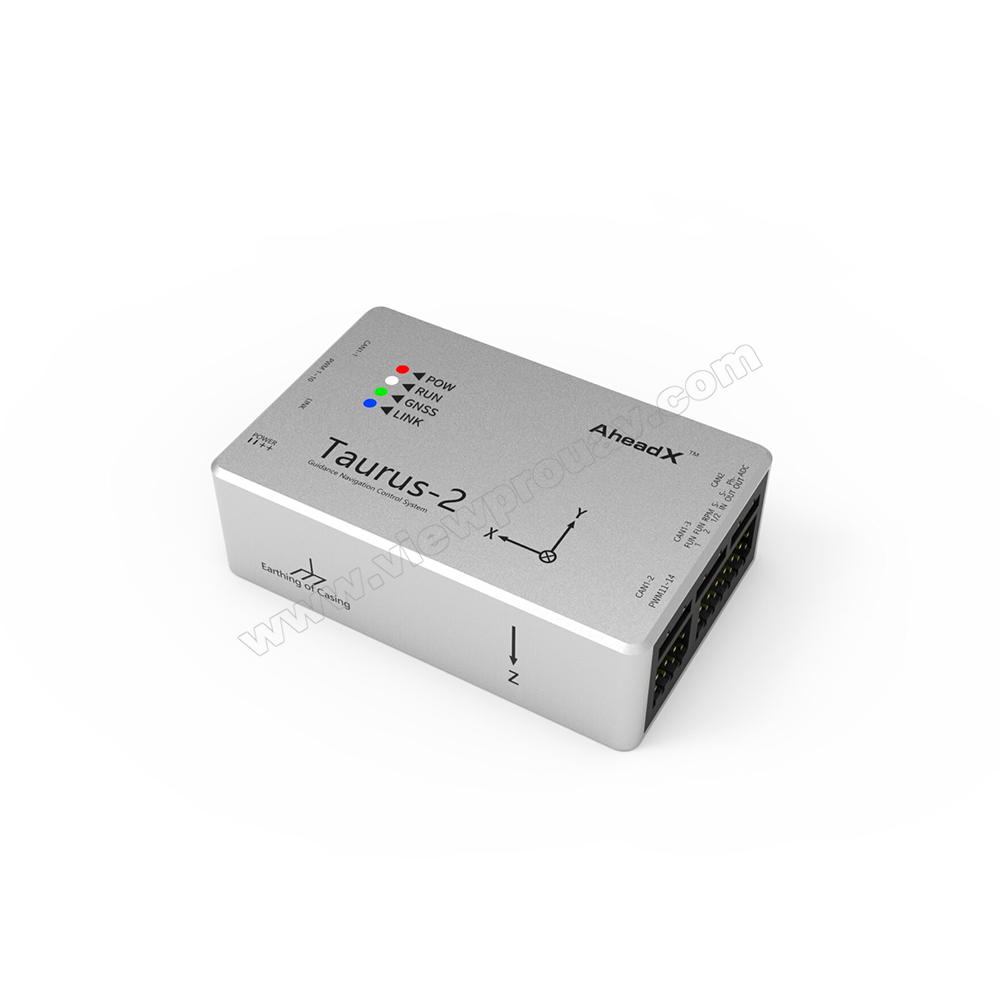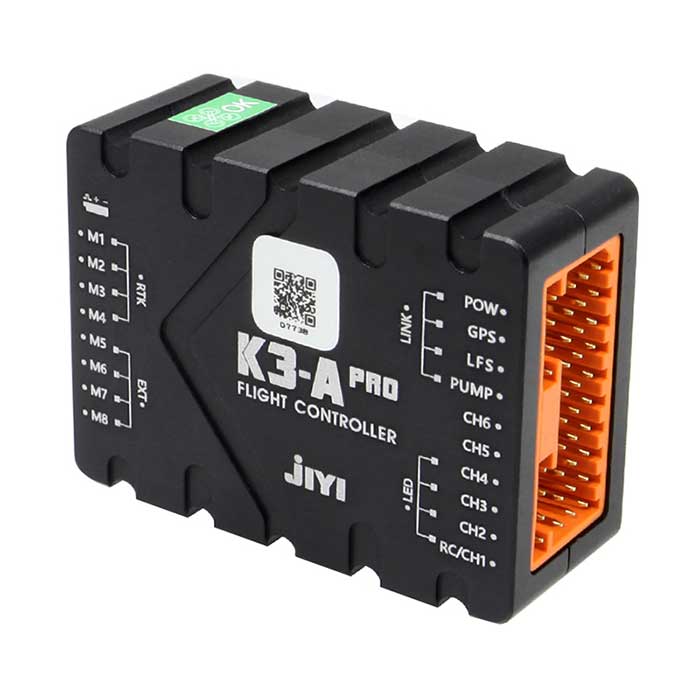SparkNavi Drone Flight Controller and GNSS/INS Made in Taiwan: Blazing A Trail in Drone Innovation
SparkNavi Drone Flight Controller and GNSS/INS Made in Taiwan: Blazing A Trail in Drone Innovation
Blog Article
Exploring the Duty of Drone Trip Controllers in Enhancing Trip Stability and Navigating Effectiveness
The improvement of drone technology has substantially raised the value of flight controllers, which offer as the brain of these airborne lorries. By incorporating real-time data from a selection of sensing units, flight controllers enhance flight stability and navigating performance, ensuring that drones can run efficiently also in intricate atmospheres.

Understanding Trip Controllers
Flight controllers are important components in the performance of drones, functioning as the minds that handle and stabilize trip procedures. These sophisticated tools procedure data from different sensors, consisting of accelerometers, gyroscopes, and GPS, to make certain that the drone preserves its intended trip path. The trip controller interprets this information and executes commands based upon pre-defined formulas, allowing the drone to respond to environmental changes, such as wind or obstacles.
The key function of a trip controller is to keep security during flight. It achieves this by making real-time adjustments to the drone's electric motors and control surface areas, making sure equilibrium and control. Furthermore, modern-day trip controllers integrate advanced attributes such as waypoint navigation, enabling for automated trip paths and enhanced operational efficiency.
Recognizing the design of flight controllers is critical for both hobbyists and professionals. As technology developments, flight controllers have come to be more small and qualified, incorporating man-made intelligence to adjust and enhance decision-making processes to complicated trip situations.
Secret Elements of Trip Security
Accomplishing optimum flight stability in drones depends on several crucial components that function in concert to ensure regulated and smooth operations. Central to this security is the trip controller itself, which refines information from various sensors to keep the wanted flight attitude. This consists of accelerometers and gyroscopes that gauge activity and positioning, permitting real-time adjustments to the drone's placement.
Another critical part is the digital speed controllers (ESCs), which manage the power delivered to the electric motors. By finely tuning motor rates in action to flight controller commands, ESCs aid maintain equilibrium and counteract disturbances triggered by wind or abrupt motions.
Furthermore, the style of the drone's frame plays a crucial role in trip stability. A well-structured structure minimizes resonances and improves the total wind resistant account, adding to smoother trip attributes. Finally, the assimilation of innovative algorithms within the trip controller aids in anticipating adjustments, making sure a responsive and versatile flight experience.
With each other, these parts develop a cohesive system that improves a drone's stability, permitting accurate handling and enhanced performance in numerous flight conditions.
Navigation Performance Techniques
Efficiency in navigating is important for maximizing drone operations, especially in complex environments. Effective navigating techniques enhance the ability of drones to pass through tough terrains and prevent obstacles, consequently boosting operational effectiveness and safety and security.
One prominent technique is the implementation of sophisticated general practitioners and inertial dimension devices (IMUs) that supply specific area tracking and alignment information. These innovations permit drones to determine optimum trip courses in real-time, considering numerous aspects such as wind problems and prospective barriers.
One more strategy includes making use of formulas for path preparation and optimization. Formulas such as A * and Dijkstra's algorithm can be released to determine one of the most reliable path while minimizing energy YOURURL.com intake and trip time. Integrating maker discovering models can allow drones to adaptively find out from their atmospheres, enhancing navigating capacities via experience.

Effect On Autonomous Drones
The combination of advanced navigation techniques has actually exceptionally changed the abilities of independent drones, allowing them to run with better autonomy and accuracy. SparkNavi drone flight controller and GNSS/INS made in taiwan. These enhancements are largely credited to advanced flight controllers that use real-time data processing and sensing unit blend, allowing drones to browse complex atmospheres flawlessly
The effect on independent drones expands beyond plain navigating; it includes boosted obstacle evasion, improved stability throughout vibrant problems, and enhanced mission integrity. By leveraging algorithms that include artificial intelligence and synthetic intelligence, drones can adjust to transforming situations, making notified choices that optimize their trip courses while decreasing risks.
Furthermore, the execution of durable flight controllers has promoted the execution of complex tasks, such as aerial inspections, delivery solutions, and agricultural monitoring, with marginal human intervention. This capability not just streamlines procedures however also decreases human mistake, thereby boosting total security.
Because of this, the functional extent of self-governing drones has increased substantially, making them important tools in numerous sectors. Their capability to do efficiently in varied scenarios underscores the crucial function that progressed trip controllers play in shaping the future of unmanned airborne systems.
Future Fads in Trip Control
Often, innovations in trip control innovation are poised to redefine the landscape of drone operations in the coming years. Emerging trends suggest a substantial shift in the direction of enhanced expert system (AI) combination, allowing flight controllers to process real-time data much more effectively. This evolution will certainly assist in improved decision-making abilities, enabling drones to adjust to vibrant ecological conditions autonomously.
Moreover, the execution of device understanding algorithms is expected to enhance predictive upkeep, consequently minimizing downtime and expanding the lifecycle of drone elements. This proactive strategy to upkeep will be crucial as drone applications broaden across various industries, from agriculture to logistics.

.jpg)
Lastly, advancements in safe and secure interaction procedures will certainly attend to safety and security and regulatory issues, making certain that drones can run flawlessly in busy airspaces (SparkNavi drone flight controller and GNSS/INS made in taiwan). Collectively, these why not try these out fads point towards a future where trip control systems are not just smarter and a lot more additionally capable however effective of operating safely in an increasingly integrated airspace
Final Thought
To conclude, drone flight controllers are essential to boosting flight security and navigation efficiency with the innovative handling of sensing unit data. By keeping ideal flight mindsets and employing advanced algorithms for path optimization and obstacle evasion, these controllers considerably contribute to the autonomy and functional safety of drones. As innovation continues to develop, additionally improvements in flight control systems are anticipated, guaranteeing enhanced performance and broadened capacities in the world of unmanned aerial cars.
By incorporating real-time data from an array of sensors, trip controllers enhance trip stability and navigating efficiency, guaranteeing that drones can operate efficiently also in complex atmospheres.Trip controllers are integral parts in the functioning of drones, serving as the brains that stabilize and take care of flight procedures. Furthermore, modern trip controllers include innovative functions such as waypoint navigation, allowing for automated trip courses and improved functional effectiveness.
Central to this security is the flight controller itself, which refines data from numerous sensors to preserve the desired flight perspective.In conclusion, drone flight controllers are indispensable to improving flight stability and navigating effectiveness with the innovative processing of sensing unit information.
Report this page